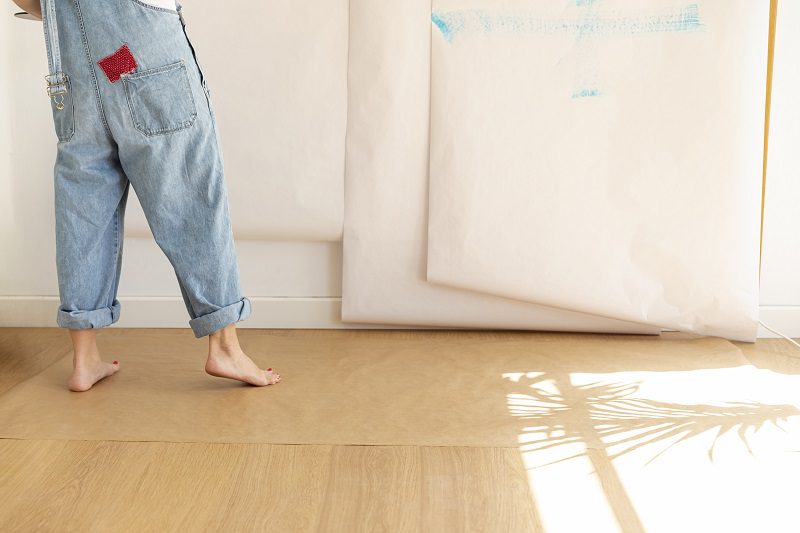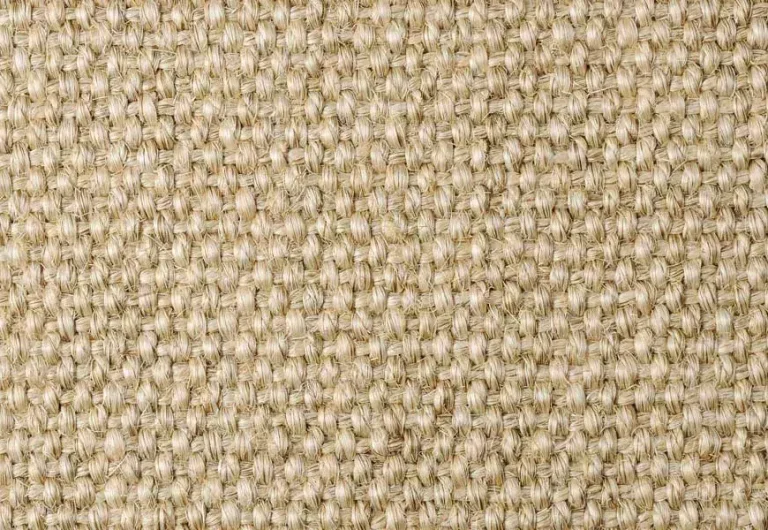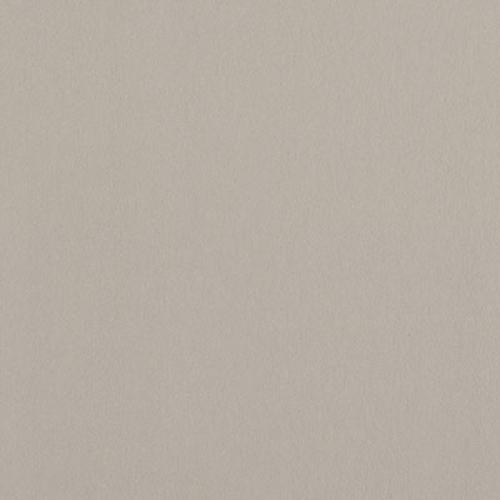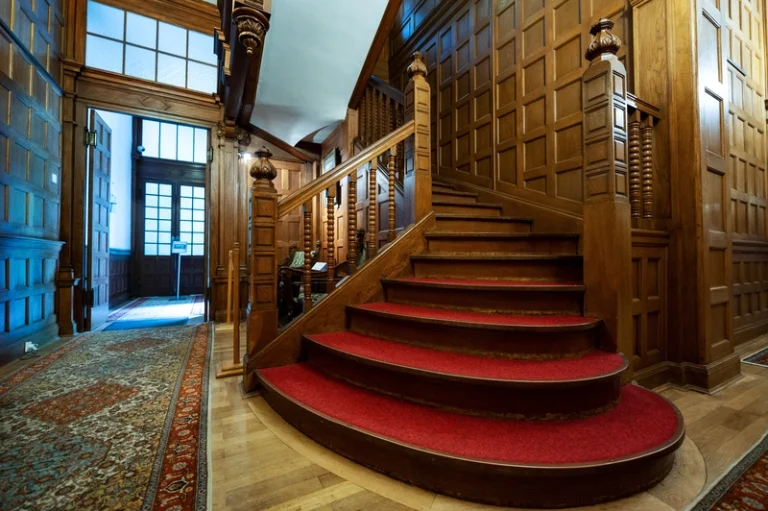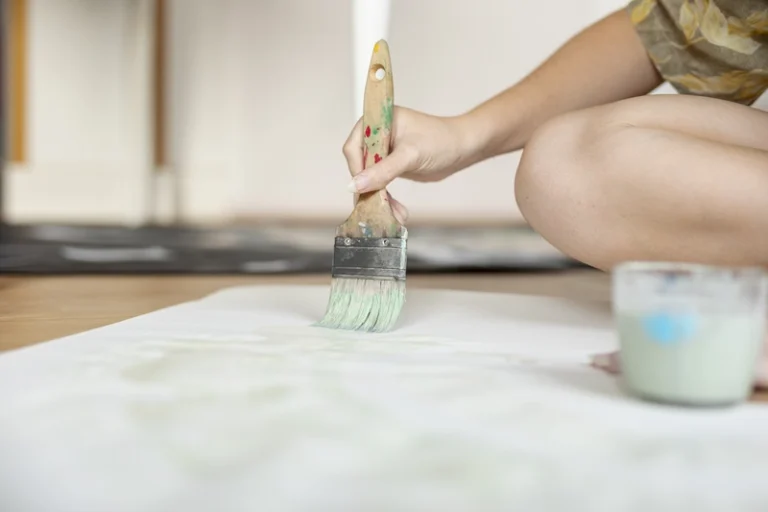Are you tired of hearing that annoying squeak every time you walk across your floor? From loose floorboards to subfloor movement, there are several reasons why your floor may be making noise. We will explore the common causes and show you how to fix a squeaky floor.
Whether you need to tighten loose nails, fill gaps with wood putty, or even hire a professional, we’ve got you covered. Learn how to get rid of squeaky floors and prevent this issue in the future!
Causes of Squeaky Floor
Squeaky floors can be caused by various factors, including loose floorboards, shrunken or warped floorboards, loose nails or screws, and subfloor movement.
Basically, all these factors not only diminish the aesthetic appeal of the floor but can also pose safety hazards, causing tripping accidents or indicating underlying problems that require prompt attention.
a. Loose Floorboards
Loose floorboards are a common culprit for squeaky floors and can be addressed using solutions such as wood shims and construction adhesive.
When floorboards become loose, they tend to rub against each other or the underlying subfloor, causing annoying squeaks that can disturb the peace of a home. The main reason behind this issue is typically the natural expansion and contraction of wood due to changes in humidity and temperature. Over time, the nails holding the floorboards in place can loosen, creating gaps that lead to movements when pressure is applied.
To resolve this, using wood shims and construction adhesive can effectively stabilise the floorboards and eliminate the squeaking. Let’s delve into how you can identify and fix loose floorboards with these remedies.
b. Shrunken or Warped Floorboards
Shrunken or warped floorboards can result in squeaky floors, requiring solutions like wood filler or replacement with hardwood flooring.
When floorboards shrink or warp due to changes in humidity levels or water damage, gaps can form between the boards. These gaps can lead to the boards rubbing against each other, causing annoying squeaks when walked upon. The use of wood filler can be an effective way to fill in these gaps and stabilise the floor, reducing or eliminating the squeaking sounds. If the damage is extensive and the floorboards are beyond repair, opting for a complete replacement with new hardwood flooring might be the best long-term solution to ensure a sturdy and squeak-free floor.
c. Loose Nails or Screws
Loose nails or screws can lead to floor squeaks and necessitate tightening or replacing them with appropriate fasteners such as plasterboard screws or wood screws.
Identifying and fixing loose nails or screws is crucial in maintaining a quiet and sturdy floor. When not properly secured, these fasteners can cause the floorboards to rub against each other, resulting in annoying squeaks. To address this issue, start by locating the problematic areas by walking around and listening for the squeaks. Once identified, carefully remove the old nails or screws and replace them with new, longer fasteners such as plasterboard screws or wood screws.
It’s important to choose the right type of fastener for the specific flooring material. For hardwood floors, wood screws are recommended, while for subfloors or underlay, plasterboard screws may be more suitable. When installing the new screws, make sure to create a starter hole first by drilling a small guide hole to prevent splitting the wood and ensure a secure fit.
d. Subfloor Movement
Subfloor movement, often due to inadequate support or floor joist issues, can result in persistent floor squeaks that may require reinforcing the subfloor.
Subfloor movement is a common issue that can lead to annoying squeaks echoing throughout a home. When the subfloor lacks proper support or has problems with the floor joists, it can cause instability in the flooring system. This instability results in the movement of the subfloor, creating friction between the subfloor and the floor joists, which manifests as squeaky floors. The root cause of these squeaks is often related to the interaction between the subfloor and the supporting structure beneath it.
Reinforcing the subfloor is crucial to eliminating or reducing the impact of subfloor movement on floor noise.
How to Identify the Source of the Squeak
A squeaking floor can certainly disrupt your comfort. So,if you wonder how to stop floors from squeaking, find out the cause first.
To identify the source of a floor squeak, utilise methods such as walking around and listening, using a moisture meter, and checking for loose nails or screws. These measures can be particularly useful in homes where squeaky floors are a common issue.
a. Walk Around and Listen
Walking around and listening for squeaks in specific areas can help pinpoint the location of the problem, often associated with specific wooden floorboards.
This hands-on approach involves taking deliberate steps around the room while paying close attention to any squeaking sounds that emanate from beneath your feet. By moving slowly and methodically, you can focus on isolating the areas where the floorboards seem to be causing the noise, allowing you to zero in on the problematic spots. It’s crucial to distinguish between the different types of squeaks, such as those caused by loose nails, gaps in the subfloor, or friction between floorboards.
b. Use a Moisture Meter
Employing a moisture meter to assess the moisture levels in the subfloor and wooden floorboards can help in identifying potential causes of floor squeaks.
When using a moisture meter, it is important to first ensure the device is properly calibrated for accurate readings. Begin by selecting an appropriate setting for wood or subfloor testing, depending on the material being assessed.
- Place the moisture meter on the subfloor near edges and corners where moisture can accumulate.
- Repeat the process across different sections of the subfloor to get a comprehensive understanding of the moisture distribution.
By systematically checking the moisture content in various areas, you can pinpoint the specific regions that may be potential sources of the squeaking issue.
c. Check for Loose Nails or Screws
Conducting a thorough inspection for loose nails or screws is crucial to identifying potential sources of floor squeaks and initiating appropriate repair measures.
It is imperative to carefully examine the entire surface of the flooring, paying close attention to areas where foot traffic is heavy or where furniture is frequently moved.
Loose fasteners can lead to instability in the floor, causing uneven surfaces or even potential hazards. Loose nails or screws can create disturbing noises when stepped on, disrupting the quiet of a home or workspace. By meticulously checking for any loose components, you can ensure the longevity and safety of your flooring.
How to Fix a Squeaky Floor
Fixing a squeaky floor involves various solutions such as tightening loose nails, using wood putty for gaps, lubricating the squeaky area, installing shims, reinforcing the subfloor, replacing warped floorboards, or seeking assistance from a professional carpenter.
To tackle loose nails, start by locating the squeaky spot and gently tapping the protruding nail with a hammer until it sinks into the wood. Then, use a screwdriver to install a new finishing nail slightly away from the old hole, ensuring it secures the subfloor firmly. For gaps, apply a generous amount of wood putty to fill in the spaces and let it dry completely.
- Next, lubricate the squeaky areas by applying a silicone-based lubricant or powdered graphite to reduce friction between subfloor layers.
- To install shims, cut small wooden wedges and gently tap them into the gaps between the subfloor and joist for added support and stability.
a. Tighten Loose Nails or Screws
Tightening loose nails or screws involves using appropriate tools and techniques, including creating pilot holes and utilising sturdy wood screws for a secure fix.
When dealing with loose nails or screws, it’s crucial to start by assessing the situation. Identifying the type of material you are working with, whether it’s softwood, hardwood, or another material, will guide you in selecting the right tools and screws for a durable solution. Remember that using the correct tools ensures a smooth operation and prevents damage to the surface you’re working on.
b. Use Wood Putty to Fill Gaps
Filling gaps with wood putty is an effective way to address floor imperfections, ensuring a smoother surface and minimising squeaking noises.
When using wood putty to fill gaps in floorboards, the process typically involves applying the putty into the gaps and allowing it to dry. Once dried, the excess putty can be sanded down to create a seamless finish. The key benefit of this method is its ability to not only improve the aesthetics of the floor by filling in unsightly gaps but also to reduce squeaks that may occur due to loose floorboards.
Choosing the right wood putty or filler is crucial in achieving a successful floor repair. Quality putties that match the colour of the floorboards can seamlessly blend in, giving a natural look post-repair. It’s essential to select a putty that is durable and flexible to prevent it from cracking or crumbling over time.
c. Lubricate the Squeaky Area
The next step in how to stop floors from creaking is to lubricate the squeaky area. Applying lubrication to the squeaky area can reduce friction between components, such as using graphite powder to minimise noise and enhance floor movement.
When you apply graphite powder to areas prone to squeaking, it creates a smooth barrier that decreases the rubbing of surfaces against each other. This thin layer of lubrication not only silences the irritating noise but also prevents unnecessary wear and tear on the flooring materials.
The reduced friction due to the graphite powder application ensures that the components move more freely, improving the overall functionality of the floor and making daily activities smoother.
d. Install Shims
Installing packers underneath floorboards can provide additional support and stability, reducing floor movement and minimising squeaking issues.
Regarding enhancing subfloor support and stabilising wooden floorboards, the strategic placement of packers plays a crucial role. Packers are thin, tapered wedges that help fill gaps and level surfaces, ensuring that the floor remains even and well-supported. To optimise the installation process, make sure to place packers along the joists underneath the floorboards, focusing on areas that exhibit excessive movement or squeaking.
By correctly positioning the packers, you can effectively address structural issues and prevent future damage. It’s essential to use precise measurements and secure the packers firmly in place to achieve the desired level of support. Consider using multiple packers in tandem to distribute the weight evenly and improve overall stability.
e. Reinforce the Subfloor
Strengthening the subfloor by reinforcing it with additional support or addressing floor joist problems can significantly reduce floor squeaks and enhance structural integrity.
When considering subfloor reinforcement, focusing on the stability of the foundation becomes paramount. The process involves adding plywood or blocking between joists to eliminate any movement or gaps that lead to noise.
Floor joists, on the other hand, play a crucial role in supporting the weight of the flooring material and furniture above, ensuring a stable and secure foundation for the entire structure. It is advisable to involve a skilled carpenter when the squeaks persist even after basic remedies, as they can assess the specific issues and implement targeted solutions. By strengthening the subfloor and addressing any underlying causes of noise, homeowners can enjoy a quieter and more durable flooring system.
f. Replace Warped or Damaged Floorboards
Replacing warped or damaged floorboards with new hardwood flooring can eliminate squeaks and improve the overall appearance and functionality of the floor.
Before embarking on the replacement process, it is essential to identify the specific areas where the floorboards are warped or damaged. This can often be detected by squeaking sounds or visibly uneven sections. Once the problematic areas are located, carefully remove the damaged floorboards, taking care not to cause further damage to the surrounding flooring. Installing new hardwood flooring provides a long-term solution to address these issues, enhancing the structural integrity of the floor and significantly reducing noise levels within the space. Hardwood flooring not only offers durability but also adds an elegant touch to the interior.
g. Hire a Professional
For complex floor squeaks or extensive repairs, seeking assistance from a professional is recommended for efficient and lasting solutions.
Professional carpenters or flooring experts bring a wealth of experience and knowledge to the repair process, ensuring that even the most intricate floor issues are effectively addressed. By entrusting the task to these skilled professionals, you can benefit from their specialised tools and techniques that are essential for achieving high-quality results.
Hiring a professional guarantees that the repairs are carried out meticulously, leading to long-lasting solutions that enhance the structural stability of your floors. Their expertise enables them to identify underlying issues that may not be apparent to untrained eyes, preventing future problems and ensuring a durable outcome.
Preventive Measures to Avoid Squeaky Floors
To prevent squeaky floors, it is essential to follow proper installation techniques, use high-quality materials, and maintain the floor’s cleanliness and dryness.
Preventative measures play a crucial role in ensuring the longevity and quality of your flooring.
When installation techniques are carried out meticulously, the risk of future squeaks decreases significantly. Investing in high-quality materials not only enhances the aesthetics of your space but also is one of the effective ways to “how to stop floorboards creaking” tips.
Regular maintenance, such as sweeping away dirt and debris and keeping the floor dry, can prevent moisture-related issues which often lead to squeaks. By adhering to these simple but effective tips, you can enjoy a quiet and stable floor for years to come.
a. Use Proper Installation Techniques
Utilising correct installation techniques, including adequate subfloor preparation and precise flooring installation, can prevent future squeaks and ensure long-lasting floor stability.
Proper subfloor preparation is essential for a sturdy foundation. Before installing hardwood flooring, it’s crucial to level the subfloor to prevent any unevenness that can lead to squeaks.
When laying the hardwood floorboards, ensure they are snugly fitted together without gaps. Proper nailing or stapling techniques should be followed per the manufacturer’s instructions, avoiding overdriving the fasteners which can cause creaks.
Acclimatising the flooring materials to the room’s humidity levels before installation can help prevent contraction and expansion, minimising potential noises in the future.
b. Use High-Quality Materials
Opting for high-quality materials like robust wood screws, durable hardwood flooring, and reliable construction adhesive can contribute to a squeak-free and long-lasting floor installation.
Using robust wood screws ensures a secure connection between the flooring materials and the subfloor, preventing any potential shifting that can lead to squeaks over time. Durable hardwood flooring not only adds elegance to your space but also offers exceptional stability, minimising the risk of creaks or uneven surfaces. The choice of an effective construction adhesive further reinforces the structural integrity of the floor, creating a strong bond that combats any potential noise issues.
c. Keep the Floor Clean and Dry
Regularly cleaning and ensuring the dryness of the floor, especially wooden floorboards, can help prevent moisture-related issues and reduce the risk of squeaks over time.
Maintaining a clean and dry floor not only enhances the aesthetic appeal of the space but also plays a crucial role in preserving the structural integrity of your flooring. Moisture seeping into wooden floorboards can lead to warping, buckling, and eventually, that dreaded squeaky sound that can be quite bothersome.
- Moisture control: Place mats at entryways to trap dirt and moisture. Use a humidifier or dehumidifier as needed to regulate indoor humidity levels.
- Regular sweeping and mopping: Dust and debris can contribute to moisture retention, so consistent cleaning is key.
- Immediate spill cleanup: Promptly clean up any spills to prevent liquid from seeping into the floor.
- Protective coatings: Apply sealants or protective coatings to prevent moisture absorption into the wood.
That’s an explanation of a few tips for how to fix a squeaky floor that you can try out. However, if you’d rather prevent squeaks altogether, consider opting for alternative flooring options like high-quality materials carpet or vinyl from TEKA Flooring.
TEKA Flooring offers a range of flooring options to enhance the appearance of your home, including carpet, laminate, engineered wood, and high-quality cushion vinyl. We also provide professional installation services to make setting up your home easier. Come to our showroom now!
Read Also:







